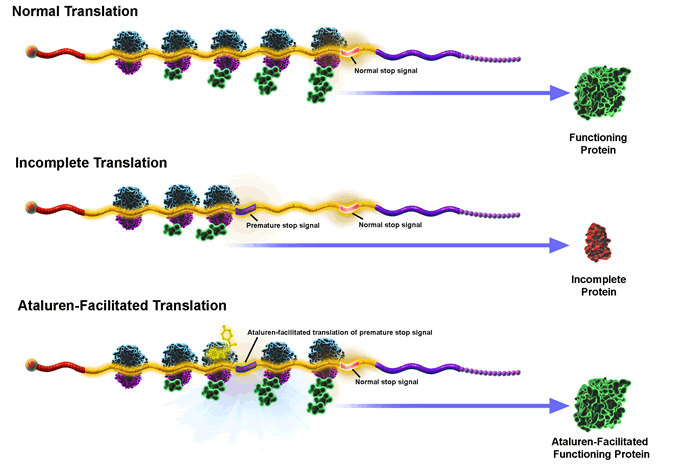Pharmacotherapy of Cystic Fibrosis: Difference between revisions
Jump to navigation
Jump to search
No edit summary |
No edit summary |
||
| Line 21: | Line 21: | ||
Suppress [[Premature Stop Codon|termination mutations]] which would normal result in premature termination and truncation of the protein. These drugs are designed to restore 'read-through' and enable the production of normal CFTR. | Suppress [[Premature Stop Codon|termination mutations]] which would normal result in premature termination and truncation of the protein. These drugs are designed to restore 'read-through' and enable the production of normal CFTR. | ||
<br> | [[Image:Ptc_technology_white-with-l.gif]] | ||
<br> | |||
=== References<br> === | === References<br> === | ||
<references /><br> | <references /><br> | ||
Revision as of 13:30, 13 November 2010
Pharmacotherapy of Cystic Fibrosis
Pharmacotherapy relates to the use of chemical drugs to regulate and improve the function of defective CFTR channels.[1]
Potentiators
Example: VX-770
Attempt to correct Class III and Class IV CFTR mutations by increasing the conductance of the CFTR channel.
Correctors
Example: Trimethyl-oxide
Attempt to correct Class II CFTR mutations by improving the trafficking of CFTR channels to the Cell Membrane.
Termination Suppressors
Example: Gentamicin, G41, PTC124 (Ataluren[2])
Suppress termination mutations which would normal result in premature termination and truncation of the protein. These drugs are designed to restore 'read-through' and enable the production of normal CFTR.
References
- ↑ David L. Rimoin, J. Michael Connor, Reed E. Pyeritz, Bruce R. Korf (2007). Emery and Rimoin's Principles and Practice of Medical Genetics e-dition. 5th ed. Amsterdam: Elsevier. p1354-1394
- ↑ http://www.ptcbio.com/3.1.1_genetic_disorders.aspx
